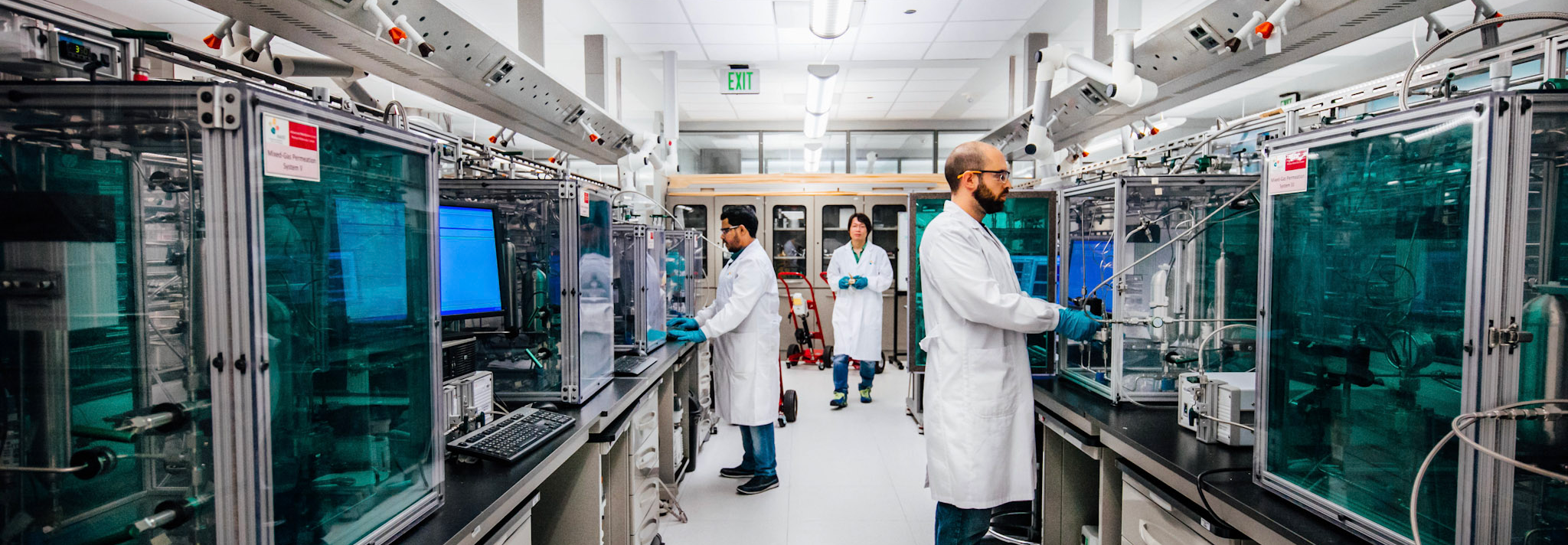


Gas separations are energy-intensive and ubiquitous in the modern world: in oil and natural gas refineries, in chemical manufacturing, for environmental control and to reduce carbon dioxide emissions. Membrane based gas separations can offer higher energy efficiency than traditional alternatives, but real-world performance depends on membrane material. A material’s ability to separate one gas from another is governed by solubilities and diffusivities: the extent to which different gases dissolve in or stick to the material and the ease with which they spread through it. Chemists design new materials at the molecular scale, employing polymer synthesis and gas transport theories with the aim of maximizing solubility and diffusivity differences between specific gases. These theories are tested in the Gas Permeation and Sorption Laboratory. Researchers measure gas solubility in bulk materials gravimetrically (by monitoring sample weight) or barometrically (by monitoring test chamber pressure). Permeability – the product of solubility and diffusivity – is measured by exposing thin films of new materials to different combinations of gases at different pressures, while monitoring the flow rates and compositions of the gas mixtures that permeates through. Such tests require specialized equipment. Of the 40 instruments in this laboratory, 37 were custom-built in-house by AMPM students and staff, incorporating input from USA’s leading gas separation research laboratory. This laboratory is now the premier facility of its kind in the world, providing unmatched testing capacity and data quality. Its construction and continued success reflect the collective efforts and talents of AMPM students, staff, faculty, and partner universities. Current research spans a variety of materials and applications, with a focus on separations of particular relevance to the Kingdom of Saudi Arabia such as removal of contaminants from natural gas and separation of light hydrocarbons.